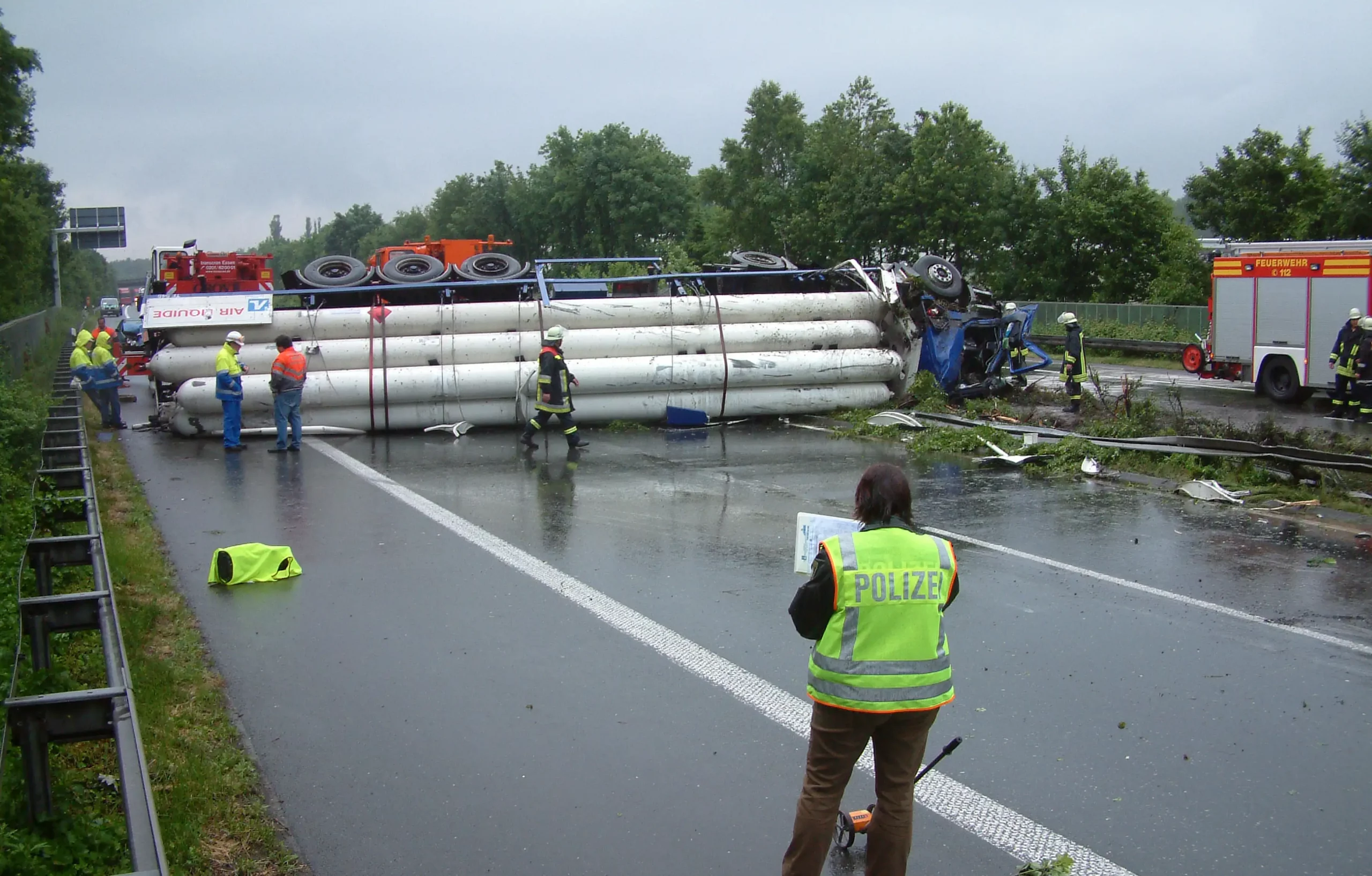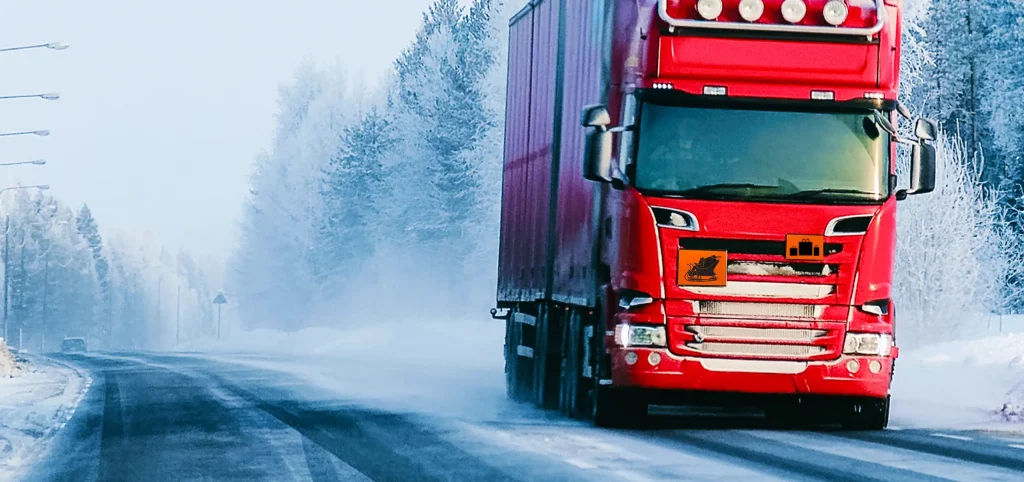Accidents involving dangerous goods on German roads are rare – fortunately. According to the German Federal Highway Research Institute (BASt), of around 1,000 accidents (involving personal injury) involving goods vehicles, only eight are categorised as accidents involving dangerous goods. The biggest problem here is the lack of or incorrect load securing.
The proportion of toxic hazardous goods is around 29%, which clearly shows how important it is to secure the goods being transported in order to prevent personal injury and the release of harmful substances. The environmental damage caused and the associated costs in the event of a tanker accident, for example, can quickly be twice as high as in a normal goods transport accident.
In the event of a hazardous goods accident, it is important for the fire service to find out as quickly as possible which hazardous substance is on or in the vehicle or has already escaped from the vehicle. The prerequisite for this is, on the one hand, the correct labelling of the load and, on the other hand, the easy legibility of the orange-coloured warning sign, which usually indicates the UN number and the hazard number of the substance being transported. In many of these cases, however, the external labelling is completely or partially destroyed due to an accident (e.g. a fire) and no quick and reliable information can be derived about the substances involved or the hazards they pose.
This is where our dangerous goods warning signs come into play. By using Regoplast® dangerous goods warning signs, you fulfil ALL requirements and classifications according to the current ADR / RID. They have been developed in accordance with the latest regulations and are BAM-tested. The signs are maintenance-free, fire-resistant, UV-stable, largely resistant to acids and alkalis and indelible.
Click here for our hazardous goods range:


